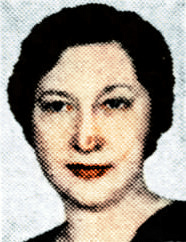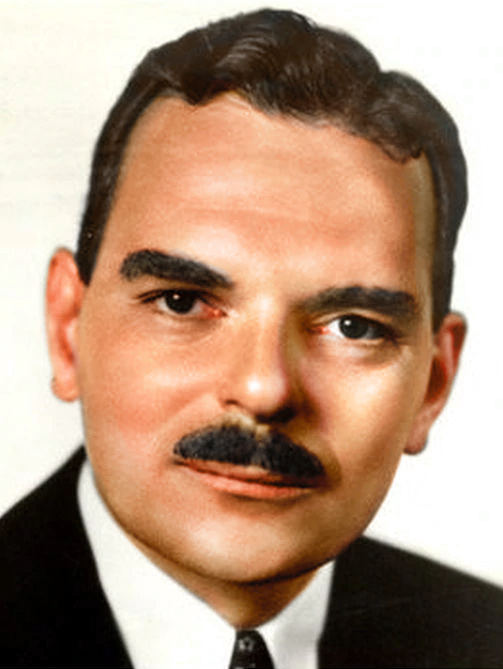The Pittsburgh Press (September 4, 1944)
BRITISH LIBERATE BRUSSELS
Americans reported in Holland
Allies near Antwerp after sweep through heart of Belgium
By Virgil Pinkley, United Press staff writer
Sweeping through Belgium, U.S. and British forces today were nearing the border of the Netherlands. British forces liberated Brussels (1) and drove to within 10 miles of Antwerp, and front reports said U.S. troops took Namur and Mons and reached the area of Liège. To the southeast, Gen. Patton’s forces were pounding toward the Maginot Line and were said to have taken Metz and Nancy. Unconfirmed Stockholm reports said the Yanks had taken the German village of Perl (2). Along the Channel, the Canadians advanced 20 miles to within 25 miles of Boulogne (3).
Bulletin
London, England (UP) –
The German DNB News Agency said tonight that U.S. forces had reached the Schelde Rover estuary in the Antwerp area. The clandestine German-language radio Atlantic said British forces had occupied Antwerp.
SHAEF, London, England –
British armor captured Brussels in a sensational spurt of 70 miles across Flanders and today fanned out beyond the Belgian city to within 10 miles of Antwerp on the way to Holland and Germany.
Allied forces plunging through Boom, 10 miles south of Antwerp, found negligible resistance, and the fall of the big inland Belgian port, a gateway to Holland, was expected at any time. The capture of Antwerp would complete a battle arc around German forces holding out in western Belgium and northwestern France.
Allied headquarters late today lacked confirmation of a report that the U.S. 1st Army had thrust an armored claw across the border into Holland. Also unconfirmed was a Stockholm report that the Americans had taken Perl in a drive onto German soil near the French and Luxembourg borders.
London newspapers published unofficial reports that Calais, Boulogne and Dunkerque had fallen, effectively collapsing the last organized German resistance in the northwest coastal sector of France. Radio France also broadcast such a report but did not give its source.
Coastal observers in Southeast England believed Dunkerque 40 miles northeast of Boulogne and site of the great evacuation in 1940, was burning again. Pillars of smoke were visible over the town, and the Germans appeared to be pulling out.
The lightning stroke by the British in Belgium had cut the country in half vertically and reached within 15 miles of the Dutch frontier, trapping undetermined thousands of Germans against the Channel coast.
The sides of the trap were still loosely held because the speed of the British advance and authorities conceded that some of the Nazis might break through to the dubious safety of the Reich.
A radio broadcast credited to CBS said, as recorded here that the Allies had entered Antwerp, but there was no confirmation in authoritative quarters.
Gen. Dwight D. Eisenhower made the first official revelation that the Allies had penetrated the Grand Duchy of Luxembourg. In a broadcast message to that country and Belgium, he said their peoples were nearing their hour of liberation.
Radio France said German authorities had ordered the evacuation of civilians from the Mulhouse area of eastern France and other sectors along the Swiss frontier, acknowledging that those areas were likely to be fighting zones at any time.
While information was skimpy about the U.S. 1st Army push across southeastern Belgium, it was known that the Yanks were pushing ahead steadily. The same was true of the 3rd Army, which was within half an hour’s jeep ride of the German frontier at several places.
The south side of the Channel trap was being rolled up northward at a fast clip. The Canadians and Poles pushed toward Boulogne and Calais, which were within striking distance. They captured Auxi, 15 miles northeast of Abbeville, and reached the Authie River.
If the British succeed in taking Antwerp before the Germans can carry out demolitions, they will have one of the richest prizes of the campaign – a major port with which to supply the offensive eastward into Germany.
The British column striking northwest from Tournai rolled along the east bank of the Schelde River, where the Allies attempted a stand after the loss of Brussels in 1940.
To the west, Allied troops reached the outskirts of the big French industrial city of Lille, and were now reported clearing it.
Brussels fell at 2:00 p.m. (local time) Sunday to a British flying column that left Douai, France, at 8:00 a.m., drove across the frontier 22 miles into Tournai and swung 45 miles eastward into the capital. Belgian troops accompanied the Tommies into the city.
Two armored columns of the U.S. 1st Army chopped through southern Belgium in a drive along the valley of the Meuse toward the triangle formed by the Belgians, Dutch and German borders. Front reports said the Americans took Charleroi, Mons and Namur and reached the area of Liège, and an unconfirmed German broadcast said the Yanks were fighting on the east side of the Maas Canal, on Dutch soil and only about 18 miles from the German Rhineland city of Aachen.
Lt. Gen. George S. Patton’s 3rd Army, operating under a new security blackout, were pounding through the undefended Maginot Line fortifications on a 60-mile front from the Luxembourg border to Nancy, and Radio France in Algiers said they captured both Nancy and Metz, the latter barely 20 miles west of Germany.
Headquarters said only that 3rd Army forces were operating in the Nancy area and east of Etain, 11 miles east of Verdun and 25 miles west of Metz.
The Germans, forced back more than 100 miles in four days, were at their Siegfried Line on the 3rd Army front and falling back at top speed toward that belt of fortifications east of Belgium and the Netherlands and observers believed the next few days might reveal whether or not they could make a stand on their West Wall.
Beaten enemy armies were on the run everywhere, and Allied airmen had another field day over their fleeing columns yesterday. For a loss of two fighter-bombers, the U.S. 8th Air Force bombed and strafed the Germans from dawn to dark, destroying or damaging 200 motor vehicles, 54 locomotives, 75 railway cars and scores of other road and river targets.
Gen. Eisenhower: Belgium’s liberation begun; Holland and Norway next
London, England (UP) –
Gen. Dwight D. Eisenhower in a message broadcast to the people of Belgium and Luxembourg said today that their liberation had begun, and promised that Norway and Holland would also be freed soon.
“To all of you I say, be of good courage – victory is assured,” the radio message, broadcast for Eisenhower by a member of his staff, concluded.
Gen. Eisenhower said:
Today I address myself to the people of Belgium and the Grand Duchy of Luxembourg to say that the day of your liberation has begun. Your long period of hardship under the heel of Nazi domination will soon be ended. It is certain that you will bear bravely the hardships of war which was inevitable during a battle of pursuit such as is now being waged upon your soil.
The first task of our Allied armies is to harry and destroy the retreating enemy. This purpose will be pursued rigorously so that the day of our final success may come sooner.
Gen. Eisenhower said the armed forces of Belgium and Luxembourg formed part of the Allied Expeditionary Force and were fighting bravely for the freedom of their homelands.
He said:
Be assured that it is our purpose to do everything to restore peace and normal conditions throughout Belgium and Luxembourg at the earliest opportunity so that their valiant people, once again masters of their own destiny, may live as free men in the family of free nations.



